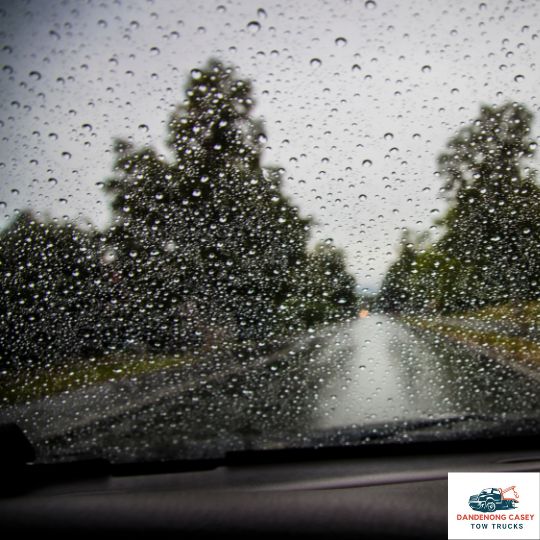Introduction
Wet weather can present a multitude of challenges for drivers. Rain, drizzle, or thunderstorms can reduce visibility, create slippery road conditions, and increase the risk of accidents. To ensure your safety and that of others on the road, it’s essential to adapt your driving habits when the weather turns wet. In this article, we’ll provide you with five valuable tips for driving in wet weather.
1. Slow Down and Increase Following Distance
One of the most critical adjustments to make in wet weather is to slow down. Reduced visibility and wet roads can lead to longer braking distances, so it’s crucial to drive at a safe and manageable speed. Additionally, increase the following distance between your vehicle and the one in front of you. This extra space gives you more time to react to sudden stops and helps prevent rear-end collisions.
2. Use Headlights and Wipers
Always turn on your headlights when driving in wet weather, even during the daytime. Headlights increase your visibility to other drivers and make your vehicle more noticeable in the rain or low-light conditions. Additionally, use your windshield wipers to maintain a clear view of the road. Make sure your wipers are in good working order and replace them if they leave streaks or don’t effectively clear the windshield.
3. Avoid Sudden Maneuvers
Sudden maneuvers like sharp turns, rapid acceleration, or abrupt braking can be risky on wet roads. These actions can lead to loss of traction and result in skidding or hydroplaning. Instead, make gentle and gradual movements while driving. Use smooth steering and brake inputs to maintain control of your vehicle.
4. Check Your Tires
Your vehicle’s tires play a crucial role in wet weather driving. Ensure your tires are in good condition with adequate tread depth. Worn-out tires are more likely to lose traction on wet roads. Proper tire pressure is also important, as underinflated tires can reduce handling and increase the risk of hydroplaning. Regular tire maintenance is key to safe wet weather driving.
5. Be Mindful of Puddles and Hydroplaning
Puddles on the road can be deceptive. Avoid driving through standing water or puddles, especially if you can’t see the road beneath them. Hydroplaning occurs when your tires lose contact with the road’s surface due to water buildup. If you do encounter puddles, drive through them at a slow, controlled speed to reduce the risk of hydroplaning.
Bonus Tip: Plan Ahead and Stay Informed
In anticipation of wet weather, plan your journey ahead of time. Check weather forecasts and road conditions before heading out, and consider delaying your trip if severe weather is expected. Staying informed about the weather and road conditions can help you make informed decisions and adjust your travel plans accordingly.
Conclusion
Driving in wet weather demands careful attention and adjustments to your driving habits. By slowing down, increasing following distance, using headlights and wipers, avoiding sudden maneuvers, and checking your tires, you can reduce the risks associated with wet road conditions. Always prioritize safety, and when in doubt, consider delaying your trip until the weather improves. Safe and cautious driving in wet weather ensures your well-being and the safety of others on the road.
A Full-Service Towing Melbourne Company in Melbourne South Eastern Suburbs.
Our Services
- Car Towing
- Van Towing
- Truck Towing
- Emergency Towing
- 24/7 Towing
- Motorcycle Towing
- Cheap Towing
- Old Car Removal
- Junk Car Removal
- Boat Towing
- Bus Towing
- Clearway Towing
- Accident Towing
- Caravan Towing
- Trailers Towing
- Parking Towing
- 4WD Towing
- Limousine Towing
Need to tow your vehicle immediately?
Dandenong Casey Tow Trucks is located near the Keysborough, Victoria 3173. Please check the below map.

Dandenong Casey Tow Trucks
50 Fitzgerald Road
Hallam VIC 3803
(03) 7042 2011
https://www.dandenongcaseytowtrucks.com.au
https://www.facebook.com/DandenongCaseyTowTrucks
https://www.pinterest.com/dandenongcaseytowtrucks/
https://twitter.com/DandenongTowing

Recent Comments